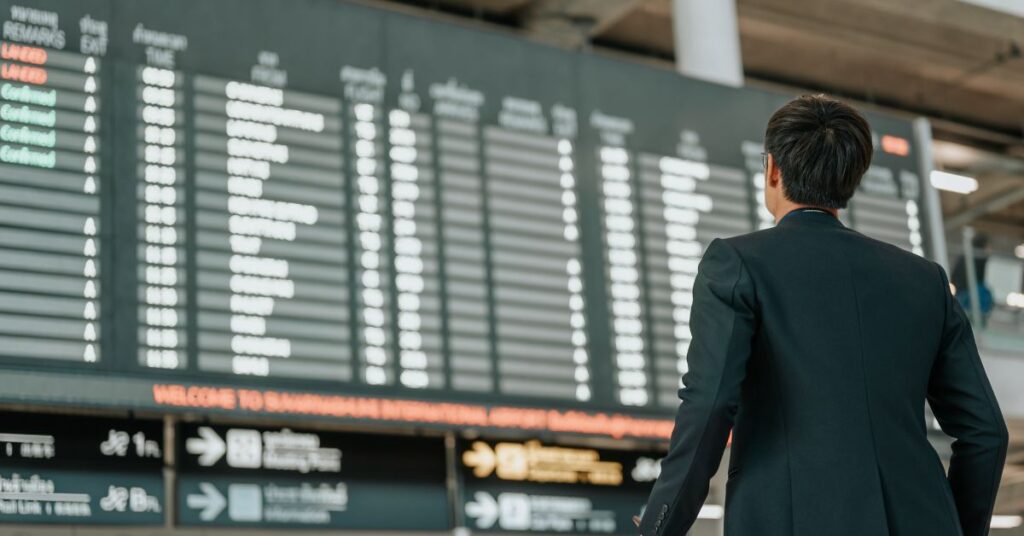
You might have traveled to various countries globally as a business traveler or an industry leader. It could be for business conferences, client meetings, or other work-related purposes. While booking flights, you should have observed that every airport has a unique code. These are known as international airport codes or global airport codes.
These airport codes often comprise 3 letters. These are created by the International Airport Transport Association (IATA). They also have 4 letters by the ICAO (International Civil Aviation Organization)
They act as a universal language for airports worldwide. By understanding these codes, you can simplify flight bookings, coordinate schedules, and reduce errors. According to IATA, there are over 17,000 possible code combinations. Each of these has approximately 11,300 codes currently assigned and 40-50 codes assigned annually.
In this blog, we will help you understand the importance and significance of airport codes. This will help you familiarize yourself with the all airport codes list. With this knowledge, you’ll enhance your travel planning and ensure smoother journeys every time.
The History of Airports and Their Codes
In the early 20th century, identifying airports became increasingly important as airplanes evolved. A system was needed to organize and streamline this process. Previously, cities were used as identifiers where different cities had one airport. This created ambiguities in code overlaps and variances within naming conventions.
During the 1930s, IATA developed and started to use an international airport code system to promote uniformity. These three-letter airport codes consist of geographical names and two-letter country designations. These were established by the International Telecommunications Union, and codes are used for various purposes.
By the 1960s, the system had gained widespread acceptance. This cemented its place in global aviation and became a cornerstone of modern travel.
Types of International Airport Codes
There are two types of global airport codes:
1. IATA Codes
These codes are of three letters and are managed by the International Air Transport Association. They are primarily used in passenger reservations, tickets, and baggage handling. For instance, JFK represents John F. Kennedy International Airport in New York.
2. ICAO Codes
Comprising of four letters, the International Civil Aviation Organization assigns these codes. They are used more extensively in air traffic control and airline operations. An example is KJFK. This specifies John F. Kennedy International Airport at a more detailed level for air traffic control purposes.
To find out the code for an airport, you can visit https://www.world-airport-codes.com/
Calculate your savings now!
Why Are Airport Codes Necessary?
1. Simplifying Communication
Global airport codes act as an internationally recognized shorthand. It allows for direct communication to cut across varied languages and geographical regions. Airport names, if given in full and translated wrongly, could lead to misunderstandings. However, these three-letter codes can make communication clear and prevent errors.
2. Enhancing Operational Efficiency
International airport codes are deeply integrated into the logistics of aviation. From booking tickets and handling baggage to managing air traffic control, these codes are the backbone of operations. Hence, enabling systems to function smoothly and efficiently.
3. Reducing Ambiguity
With many cities or airports sharing similar names (ex: Portland in Maine versus Portland in Oregon), international airport codes eliminate confusion. This clarity is especially critical in ticketing and routing, where mix-ups could have costly consequences.
4. Supporting International Standards
Global airport codes contribute to global uniformity. This is crucial for multinational corporations and frequent business travelers. They ensure consistency across booking platforms, operational systems, and international jurisdictions. Hence, making travel seamless.
You may also like: 10 Best Globally Connected Airports for Business Travelers.
Top 30 International Airport Codes Every Business Travel Company Should Know
Here is a thoughtfully curated all airport codes list of the significant international airport codes. These codes represent key business travel hubs across the globe, facilitating seamless global connectivity:
North America
- ATL – Hartsfield-Jackson Atlanta International Airport (Atlanta, USA)
- LAX – Los Angeles International Airport (Los Angeles, USA)
- JFK – John F. Kennedy International Airport (New York City, USA
- ORD – O’Hare International Airport (Chicago, USA)
- XYZ – Toronto Pearson International Airport (Toronto, Canada)
Canada’s largest and busiest airport.
Europe
- LHR – London Heathrow Airport (London, UK)
- CDG – Charles de Gaulle Airport (Paris, France)
- FRA – Frankfurt Airport (Frankfurt, Germany)
- AMS – Amsterdam Schiphol Airport (Amsterdam, Netherlands)
- MAD – Adolfo Suárez Madrid-Barajas Airport (Madrid, Spain)
Asia
- PEK – Beijing Capital International Airport (Beijing, China)
- HND – Tokyo Haneda Airport (Tokyo, Japan)
- DXB – Dubai International Airport (Dubai, UAE)
- SIN – Singapore Changi Airport (Singapore)
- DEL – Indira Gandhi International Airport (Delhi, India)
Oceania
- SYD – Sydney Kingsford Smith Airport (Sydney, Australia)
- AKL – Auckland Airport (Auckland, New Zealand)
Africa
- JNB – O.R. Tambo International Airport (Johannesburg, South Africa)
- CAI – Cairo International Airport (Cairo, Egypt)
South America
- GRU – Sao Paulo-Guarulhos International Airport (Sao Paulo, Brazil)
- EZE – Ministro Pistarini International Airport (Buenos Aires, Argentina)
Middle East
- DOH – Hamad International Airport (Doha, Qatar)
- RUH – King Khalid International Airport (Riyadh, Saudi Arabia)
Additional International Airport Codes
- MIA – Miami International Airport (Miami, USA)
- HKG – Hong Kong International Airport (Hong Kong)
- ICN – Incheon International Airport (Seoul, South Korea)
- SEA – Seattle-Tacoma International Airport (Seattle, USA)
- SFO – San Francisco International Airport (San Francisco, USA)
- BKK – Suvarnabhumi Airport (Bangkok, Thailand)
- ZRH – Zurich Airport (Zurich, Switzerland)
Leverage Global Airport Codes for Seamless Travel
Understanding international airport codes is indispensable for business travelers and industry leaders alike. These codes establish operations for more efficient and confusion-free travel. Understanding these codes makes a huge difference. Especially, while planning itineraries or coordinating global logistics.
By knowing these global airport codes, you will not only improve your travel planning but also elevate your business worldwide. Stay informed, travel smarter, and leverage the power of all airport code lists to make your business journeys seamless and successful.









